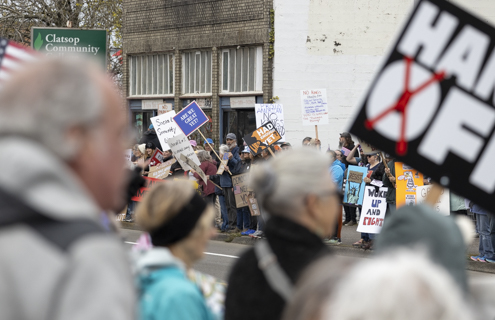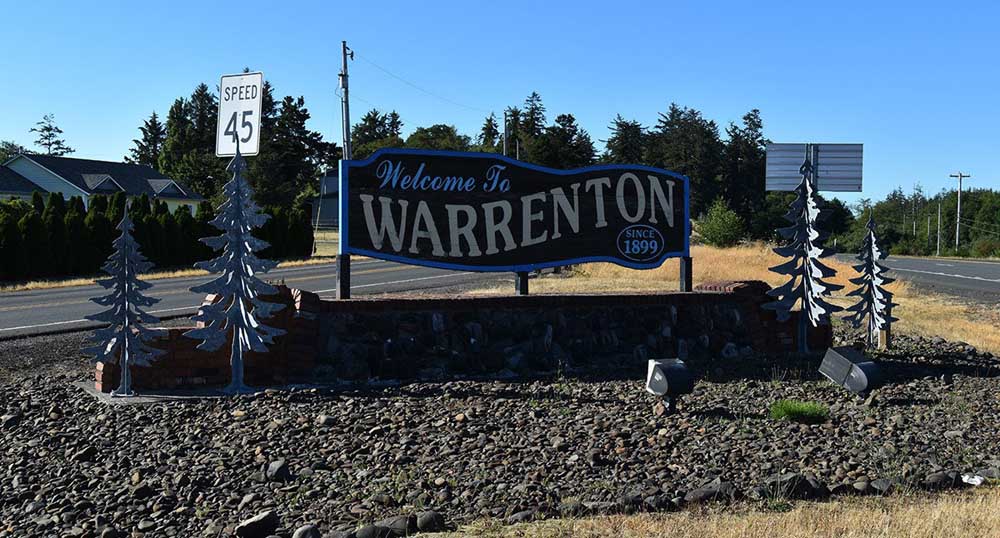Transportation plan for Seaside relates a tale of two cities
Published 5:00 pm Wednesday, September 1, 2010
SEASIDE – At first, the idea of reading a 92-page report that talks about Seaside’s transportation system may seem as exciting as watching rust on a bumper.
Despite its potential to be a real yawner, the report contains a tale of two cities: the Seaside of the present and the Seaside of the possible.
Grab a cup of strong coffee and check it out. Inside that Transportation System Plan, a whole new world awaits. The future is foretold. Seaside is transformed.
Imagine this town, where Holladay Drive “flies” over U.S. Highway 101, where a bridge connects 24th Avenue directly with Lewis & Clark Road (no strange curves to contend with, no cars shooting unexpectedly into a blind intersection) and where the highway between Broadway and Avenue G has two lanes in each direction, a raised median in the center, and bike lanes and sidewalks on both sides of the road.
OK, none of that is expected to happen in the next 20 years. But those projects are in the plan, and so are many others, all with timelines and price tags.
For more than two years, city officials and the Oregon Department of Transportation have worked on the plan that tries to answer the question “How in the world do people drive through Seaside?”
Some of the residents who attended several public workshops over those two years would admit that, at times – especially in the summer – it’s not easy. But, they offered their advice, and those suggestions for improvements, along with numerous analyses and recommendations by transportation experts, were compiled in the Transportation System Plan.
It’s ready now for the city planning commission, and, later, the City Council, to conduct public hearings. Those hearings will be scheduled this fall. Then, it will go to the Oregon Transportation Commission for approval.
Eventually, the plan, which cost ODOT more than $350,000 to develop, will be the document that state officials turn to when they want to dole out funds to Seaside for road improvements.
Pulling the plan together was not without drama, noted Seaside City Manager Mark Winstanley. Still feeling battered by a controversy several years ago about the proposed widening of Highway 101 that voters rejected, city officials felt the last thing they wanted to do was discuss transportation improvements. But the Oregon Department of Transportation requires a Transportation System Plan from cities that want funding.
If ODOT had followed its usual course of action and proposed highway improvements based on predicted traffic counts for the year 2030, the city would have seen a much wider, much faster highway through its core.
But Seaside’s plan contains something that no other city’s plan includes: alternate mobility standards. Developed after lots of compromise and conversation with ODOT planners, the standards acknowledge that, while residents want an efficient transportation system, they don’t want to give up Seaside’s livability.
Instead of allowing cars to speed through town, Seaside officials and the Sunset Empire Transit District have made commitments to invest in improvements so it will be easier to use alternate modes of transportation – buses, bicycles and walking.
“Coming up with alternate mobility standards is a giant leap for the Department of Transportation… .if ODOT hadn’t accepted them, I don’t know whether we would have had a plan,” Winstanley said.
Erik Havig, interim planning manager for ODOT, has worked on the plan since the start. Usually, he said, ODOT planners look at traffic counts for the 30th highest hour of the year. But for Seaside, that hour is during the summer when tourist traffic is at its peak and doesn’t reflect the rest of the year. So the planners agreed to look at average daily counts to project how congested Seaside would be in 20 years. From those figures, they recommended road improvements to be implemented within the next five, 10 and 20 years.
“These are what we believe are reasonable potential solutions,” Havig said. “There are levels of improvements that could be made to the highway and still meet the city’s goals for livability. We had to look at the highway and the local road network and how they operate together.”
The planners found that three intersections on Highway 101 are already beyond capacity: at Lewis & Clark Road on Seaside’s north side, at 12th Avenue and at Broadway.
But the plan calls for gradual improvements at those intersections, including turn pockets, bicycle lanes, sidewalks and pedestrian islands. A signal at Lewis & Clark Road is also recommended.
Within the next five years, the plan calls for improving Avenue S to Wahanna Road, creating a right-turn pocket on the highway at Avenue U and upgrading the Avenue U bridge. Instead of dodging cars while trying to cross the highway, pedestrians will be able to stand on islands while they wait for a clear shot.
Bicycle lanes on several streets may encourage more bicyclists, and improved paths for walkers and bikers along the highway and on the east side could make access to those areas easier as well as provide emergency evacuation routes.
Mass transit also will be given a boost in Seaside, with a $4 million transit center, recently funded by the Oregon Transportation Commission. Transit recommendations contained in the plan also suggest Sunday bus service, more bus shelters and extended evening transit service for Clatsop Community College students.
By 2020, it might be easier to travel on Wahanna Road, which could have boardwalks for bikers and walkers on the west side and sidewalks on the east side. Broadway east of the highway also will undergo improvements for walkers and bikers. Drivers could find it easier to navigate the Avenues F and G when they are straightened out and become one intersection with a signal. The plan also calls for widening the highway to three lanes between Avenue G and Holladay Drive within 10 years.
Pedestrian bridges are recommended over the Necanicum River near Avenue S and near Third Avenue and over Neawanna Creek near 15th Avenue before 2020 years.
By then, a bus trolley may provide transportation inside the city limits, and two park-and-ride lots on either end of Seaside could solve parking problems, especially in the summer.
More “shared use” bike and pedestrian paths will be sprinkled throughout town, including one that extends the Prom from Avenue U to Ocean Vista, a popular request made at the public workshops.
Eventually, Holladay Drive will be connected to U.S. 101 at Avenue U with a signal, and that “flyover,” or overpass, will be built to take northbound drivers from the highway, down Holladay and out of Seaside without ever driving on the highway.
It will be at about that time – more than 20 years from now – that the highway will be widened from Avenue G to north of Broadway.
While those projects seem far away, “if you don’t put them in the plan, you don’t have a chance to talk about it,” said Seaside Mayor Don Larson.
The plan even addresses the bypass – a point of heated discussion brought up during the controversy over widening the highway. It also was a hot topic at the recent workshops.
Although the bypass, which would be located on the east side of Seaside, isn’t included in any of the timelines, the plan notes that it is “recognized as an important project for some in the community.” It could act as an evacuation route, be convenient for freight haulers and remove through-traffic from local streets.
But before a bypass could be considered, the plan suggests that several things are needed: a feasibility study, an alignment plan, land-use applications that address state goals, an environmental impact study, construction design documents and funding.
“There’s no doubt there’s a large group of people interested in having a highway outside the city limits,” Winstanley said. “What we tried to do in the plan is to show that it requires a huge amount of planning. If they want to start that ball rolling, this is what they have to do.”
By now, that cup of coffee is finished, and the report, complete with full-color maps and diagrams, has captured the reader’s imagination. Or so transportation planners hope.
In any case, it’s time to go for a walk.





